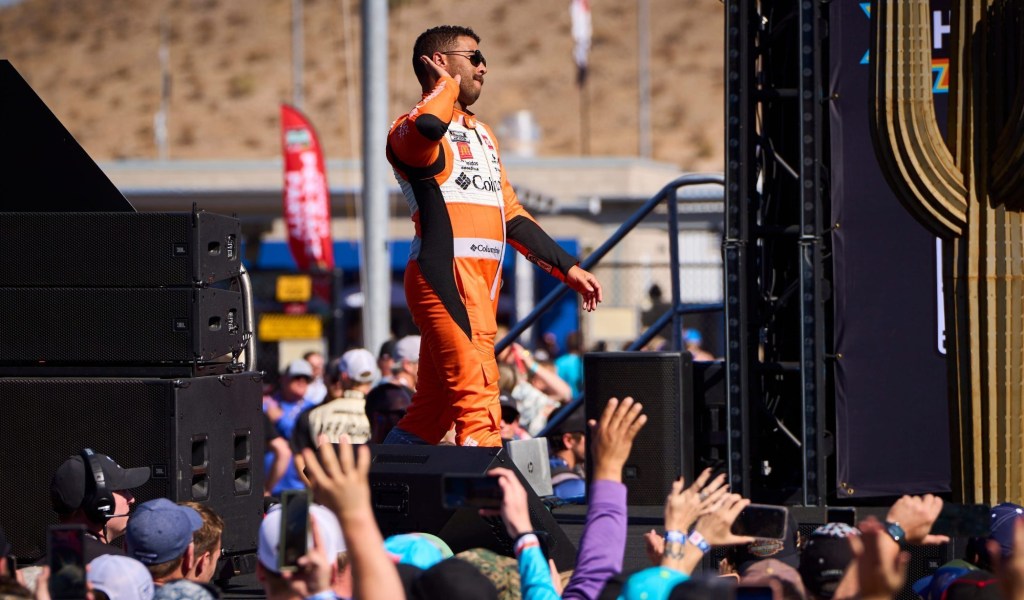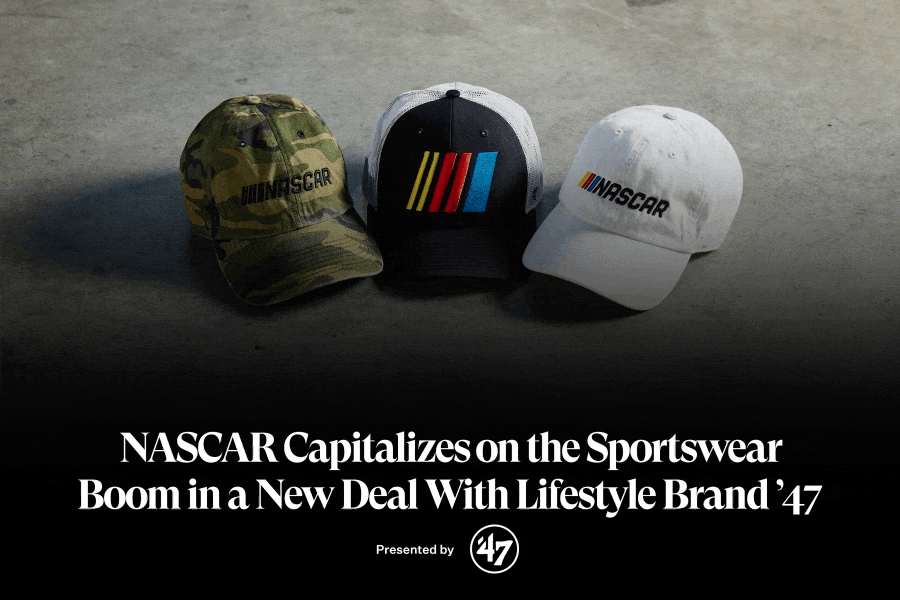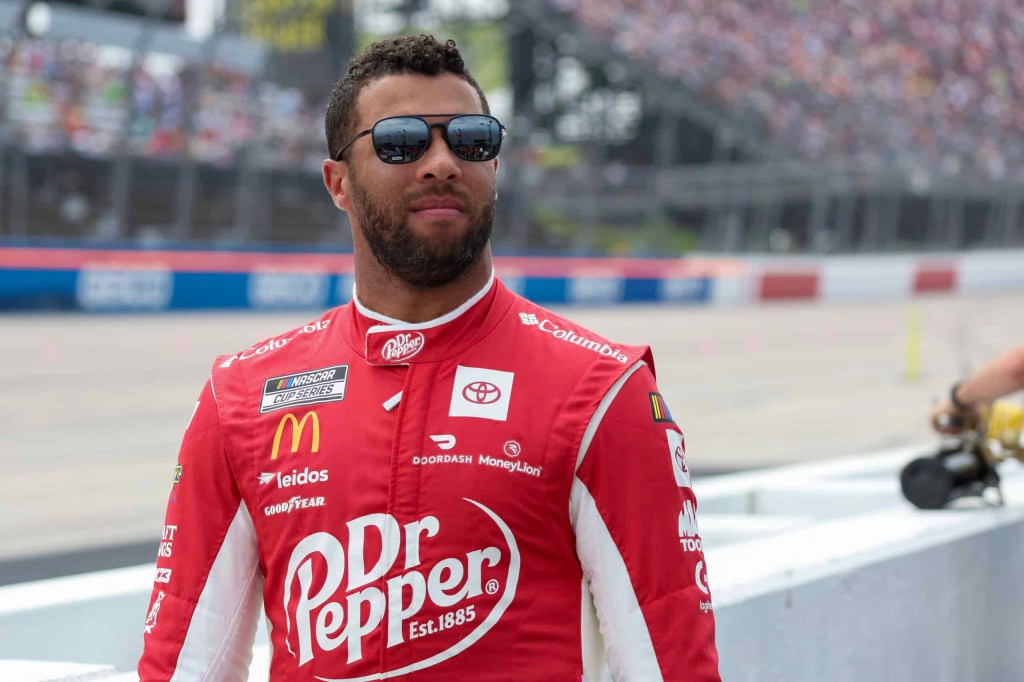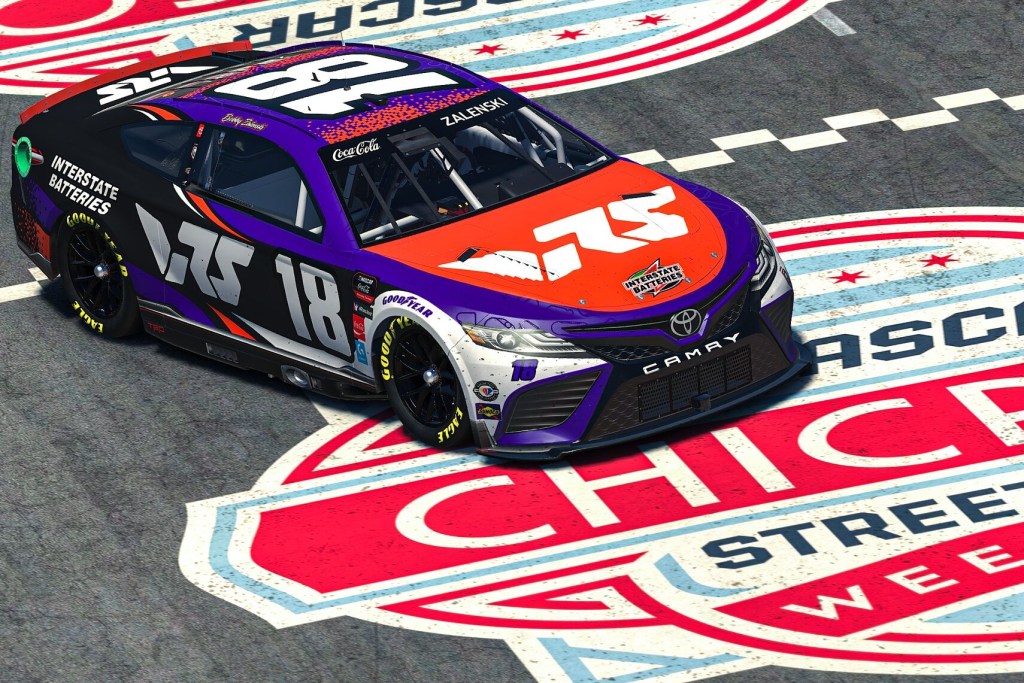Full Speed, the NASCAR equivalent of Formula One’s Drive to Survive, wastes no time highlighting perhaps the biggest star in the sport: Michael Jordan. The first half of the first episode features a segment on 23XI, the NASCAR team that the NBA Hall of Famer launched in 2021 with Denny Hamlin, who still drives for Joe Gibbs Racing. Last year, both 23XI drivers, Tyler Reddick and Bubba Wallace (above), made the playoffs, and Reddick won two races (one regular-season and one postseason).
Released Jan. 30, the Netflix show, which documents the 2023 NASCAR Cup Series Playoffs, came just in time to get fans both new and old ready for Sunday’s Daytona 500, which officially begins the ’24 season.
Jordan’s ownership is just one of several evolving aspects of NASCAR that Netflix explored—and that the sport is trying to capitalize on further this year. New $7.7 billion media rights deals will change how viewers consume races, which continue to venture to new locations. Last year, NASCAR took over the streets of Chicago for a brand-new event that—despite a delayed start and rain-shortened outcome—became NBC’s most-watched NASCAR broadcast since 2017, with 4.795 million viewers.
Now, as more U.S. fans give their attention to globally dominant F1, the 75-year-old NASCAR thinks it still has serious room to grow with a bold media strategy, increasingly recognizable faces (drivers or otherwise), and the series’ own international ambitions.
On the Silver Screen
Despite a slight overall viewership decline in 2023, NASCAR was able to secure new media rights deals that will pay out 40% more annually than its current deals. The seven-year contracts, which take effect in ’25, will include incumbent broadcast partners Fox (which is broadcasting the Daytona 500) and NBC, and welcome Amazon and TNT Sports, as well as The CW, which is taking over the second-tier Xfinity Series.
“The days of locking in massive increases for every property out there is not a lock,” Steve Herbst, former NASCAR senior vice president of broadcasting and production, tells Front Office Sports. “It’s not a guarantee anymore, so you have to get creative.” That helps explain, in part, why NASCAR is doubling its broadcast partners, which Herbst—currently vice president of sports, media, and entertainment at financial advisory firm K2 Integrity—is a fan of.
Fox and NBC will still air large portions of the beginning and end of the season, respectively, while Amazon and TNT will be slotted in the middle. But NASCAR hasn’t determined exactly how the 2025 schedule will be divided among the four partners, and there’s no guarantee viewership numbers will stay the same, especially with the move to streaming.
The strategy reminds former Turner president David Levy of NASCAR’s 2015 move off his network (and Disney’s channels) and onto NBC and the now defunct NBC Sports Network. “The ratings declined a lot, when you go from an ESPN or a TNT down to a new channel,” he says. “But guess what? That’s who pays the bill sometimes.” (In ’15, the first year of those new deals, NASCAR’s season-long viewership was down 4% from ’14 and 12% from ’13.)
Levy, who is now co-CEO of sponsorship agency Horizon Sports and Experiences, speculates NASCAR may have lost some of its fan base because of the TV moves, but he gives the series credit for reinventing itself with events like the Chicago street race and thinks the new deals are smart. “It’s always good to stick with your incumbents,” he says. “But then you also have to fish where the fish are—where the viewers are going. And the viewers are obviously going to streaming services.”
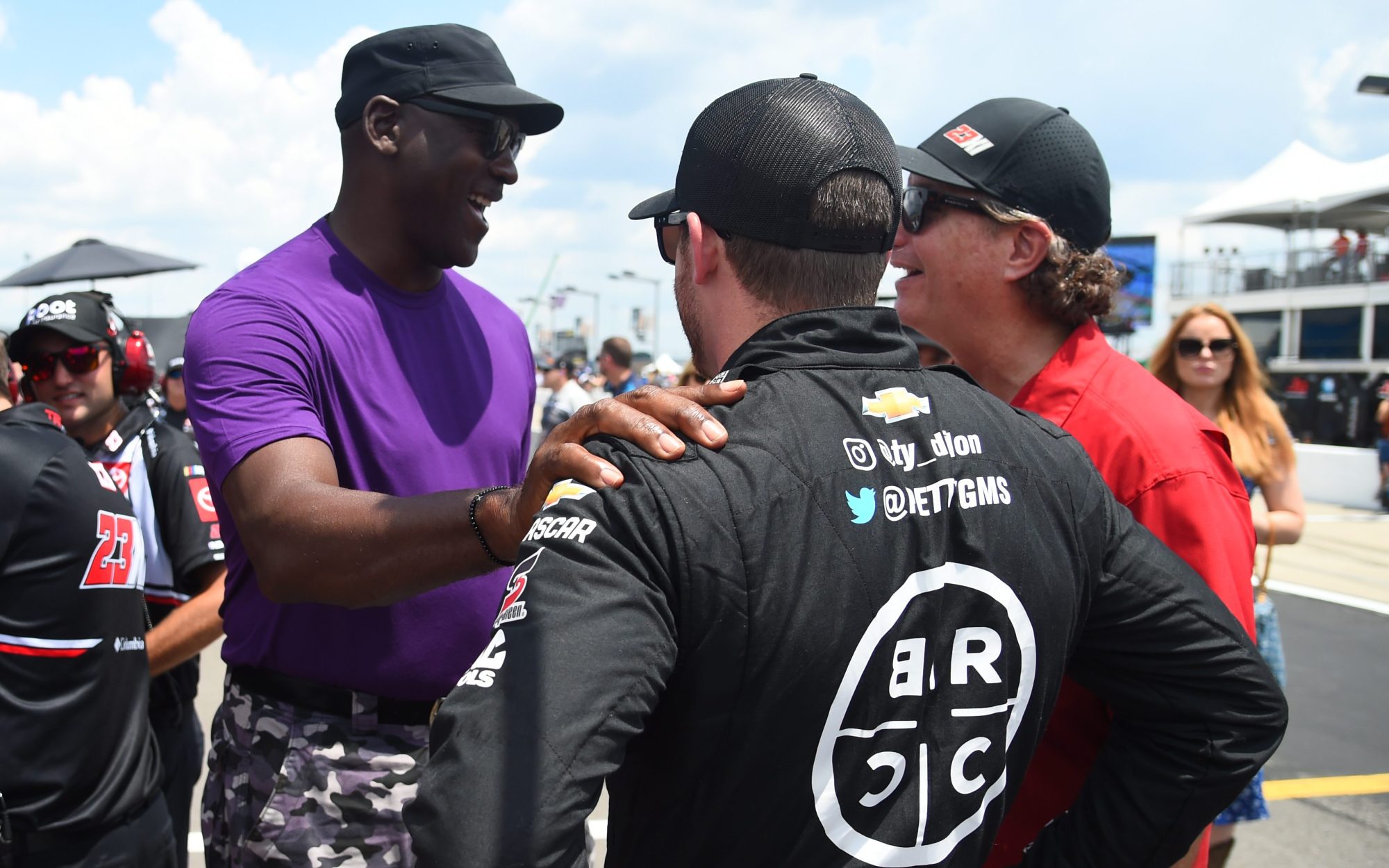
Power Boost from the GOAT
Last summer, Jordan sold his majority stake in the Charlotte Hornets as part of a deal that valued the franchise at $3 billion. In October, NBC Sports reported that Jordan’s presence at team meetings had increased in the aftermath of the sale. “He showed up at six or seven of the playoff races last year because he had two drivers in it,” Hamlin said during an appearance on The Ryen Russillo Podcast this week. “That matters for our team.” But even before that, Jordan’s passion for NASCAR was evident.
“We love having Michael out at the racetrack,” NASCAR chief operating officer Steve O’Donnell tells FOS. “One of the cool things with his presence is you can tell he’s got a love of the sport.”
As 23XI looks to become more of a week-to-week force on the NASCAR circuit this season, O’Donnell says any and all MJ sightings can only be a good thing for attracting new fans: “It’s just been neat to follow his enthusiasm for the sport, and we’d love to see him at every race, for sure, but I know he’s a busy guy. … Just having him at the racetrack, in and of itself, is fantastic.”
Jordan’s genuine love of racing may be to credit for his stewardship, but the business of owning a NASCAR team has been attracting other celebrity investors, too. In 2021, Trackhouse Racing launched with financial backing from Pitbull (yes, the rapper), who is a co-owner of the team. Floyd Mayweather started The Money Team Racing in ’22, though that squad has not competed on a consistent, full-time basis.
O’Donnell says interest remains strong from other potential investors looking to buy into NASCAR teams. Jimmie Johnson, the seven-time Cup Series champion (and one of the final qualifiers for Daytona) who is the co-owner of Legacy Motor Club and has been living in London for the past year, tells FOS that interest extends across the pond—more evidence that the sport is succeeding in expanding its identity beyond its prominently Southern roots, into perhaps a “sexier” product like F1. “There are these sports funds and these conglomerates that would like to own franchises, own the real estate the franchises sit on,” he says. “There’s a lot of interest in cash deployment, far and wide.”
And just as Johnson details interest from potential U.K. investors, NASCAR has its sights set on expanding internationally.
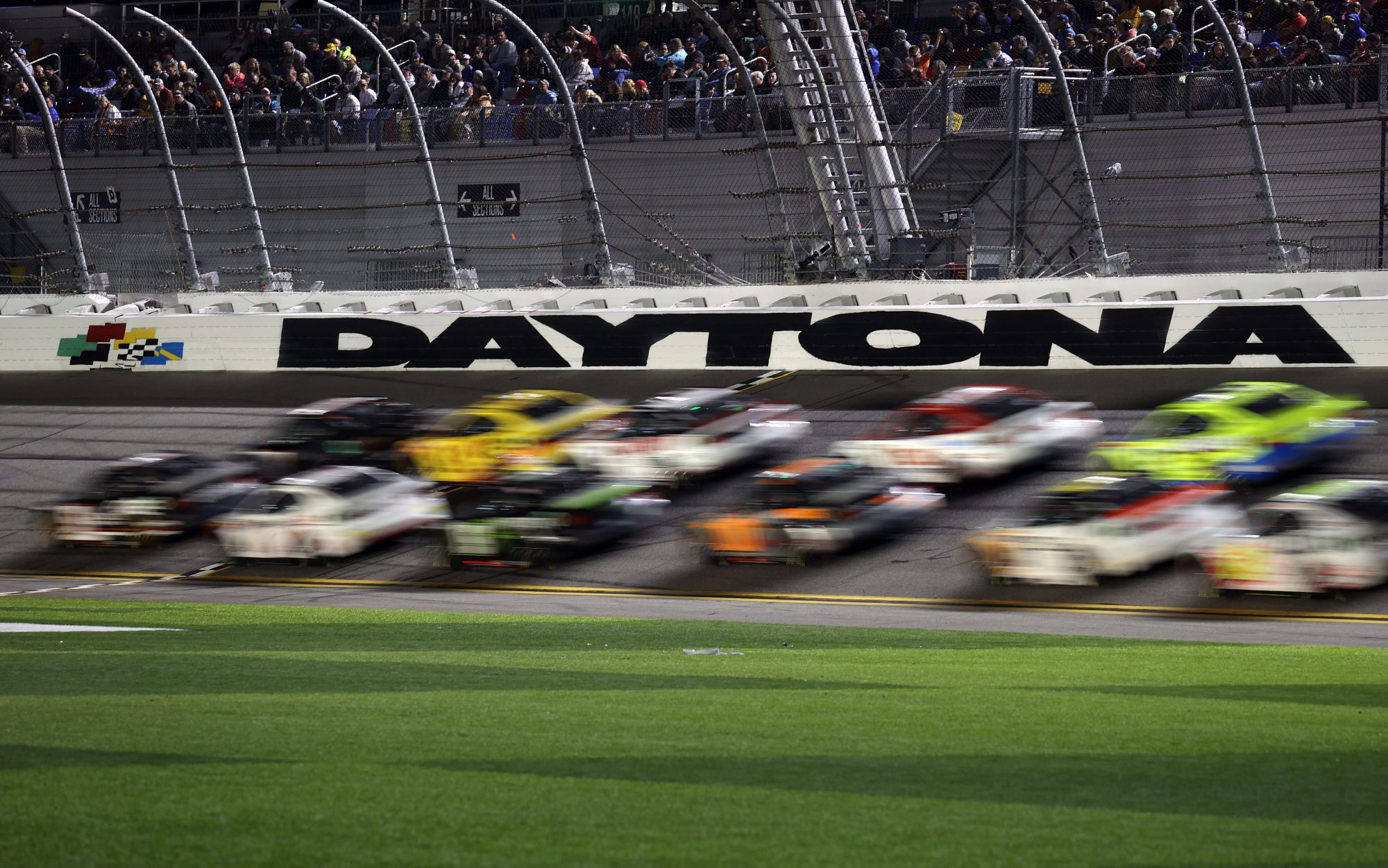
Traveling Circuit
NASCAR has developmental series in Canada, Mexico, Brazil, and Europe. In recent years, officials have spoken about mutual interest with partners in Canada and Mexico about holding a Cup Series race outside of the U.S. (Montreal was reportedly close to getting a race in 2024, and ’25 appears to still be on the table.)
At the Daytona 500, there will be representatives from seven different countries who are interested in hosting a race or at least starting to have a relationship with NASCAR. Looking at Europe, O’Donnell sees an immediate potential for one-off races with top Cup Series drivers in the continent. “That’s more probably the angle we’re taking right now is around our exhibition races,” he says. Johnson points to NASCAR’s Busch Light Clash at The Coliseum, which has raced inside the iconic Los Angeles stadium since 2021. “That is something that could be taken on the road and be used in a European football stadium pretty easily,” he says.
NASCAR will reveal its 2025 schedule before this season ends and, in turn, will answer questions about what the new broadcast flow will look like and which new countries, if any, the series will be visiting. But until then, there’s plenty of rubber to burn. For everyone in Daytona, it’s time to start your engines.


